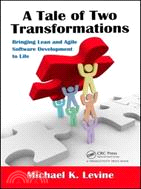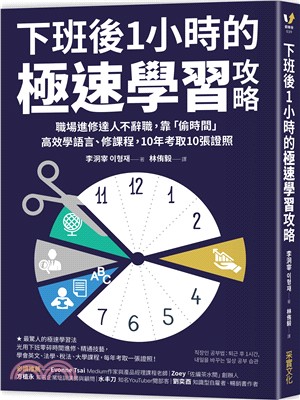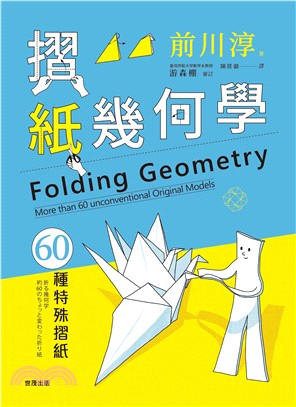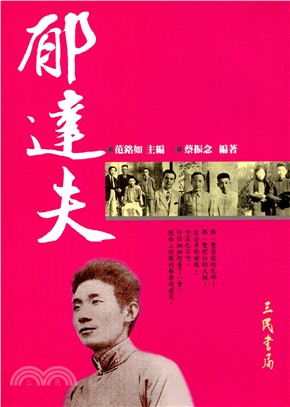A Tale of Two Transformations:Bringing Lean and Agile Software Development to Life
- ISBN13:9781439879757
- 出版社:Productivity Pr
- 作者:Michael K. Levine
- 裝訂/頁數:精裝/323頁
- 規格:24.1cm*15.9cm*1.9cm (高/寬/厚)
- 版次:1
- 出版日:2011/12/12
商品簡介
Mary O’Connell and James "Wes" Wesleyan, recently engaged to be married, share a commitment to Lean and Agile Software. They have recently become leaders in two very different companies – one, stuck in a slow-moving, unresponsive, process-driven quagmire of a software culture; the other, struggling through the chaos of a sales-driven, process-less swirl. Together with their wise mentor, Neville Roberts, they identify two approaches to making needed changes: Drive People (a top-down approach focused on processes and tools), and People Driven (an enablement approach focused on people and organizations). Mary and Wes evaluate their situations and choose approaches that best fit for them, and the transformations commence.
A Tale of Two Transformations differs from many information technology books by grappling with all the complexities of our organizations: the people, the politics, the financials, the processes – in short, the culture from which our Lean and Agile journeys must begin. The change model presented in the flow of the stories is generally applicable, and can help anyone thinking about how to improve their organization.
作者簡介
Michael continued his immersion in technology leadership when he became chief technology officer of Moore Data/Vista Information Solutions, a leading provider of information technology solutions to the real estate field. For the last 6 years, Michael has been at Wells FargoHome Mortgage, leading Operations and Technology Groups. One of the constant elements in Michael’s work has been the innovative, business-driven application of information technology. The accomplishments of his teams range from the first system to calculate duties on unfair trade, to cross-business line customer information systems in two large banks, to an early Internet-based real estate search engine, to an image-based, straight-through/exception-based loan processing system.
His continuing search for better ways to build complex business software drew him to the operations and product development approaches coming out of Toyota (Lean) and the Agile software development movement. Michael and his teams have used many of the Lean and Agile approaches over the last several years. This practical application experience, in addition to his extensive, successful career at the junction of business operations and software technology, gives Michael a unique, practical perspective on how business leaders can improve their results through better technology leadership.
目次
Wes’s Challenge at MCCA: February Narrator: Wes MCCA’s Past (in Microfilm) versus Its Future (in Information Management) MCCA’s Transformation Goal: Fix Operations and Build New Technology Products Wes’s New Role: New Product Development, Including Technology Wes’s New Organization and People Endnotes Mary’s Challenge at FinServia: February Narrator: Mary FinServia’s Troubles: Glacial, Unresponsive Product Development FinServia’s Transformation Goal: Faster and Cheaper
Setting Initial Approaches for Both Companies: February Narrator: Wes Building a Lean and Agile Change Model Comparing the Two Opportunities, and Selecting an Approach Wes and Mary Make Their Initial Plans Endnotes
UNDERSTANDING THE LANDSCAPE: MARCH
Getting to Know the MCCA Team and Culture: MarchNarrator: WesMeeting My Development TeamTransforming Operations, Including the Relationship with SalesWes Visits San Diego National InsurancePreparing to Meet SDNIListening for Customer ValueUnderstanding the Customer’s NeedsEndnotes
Reorienting FinServia’s Relationship with GRI: MarchNarrator: MaryGRI’s Death Grip on Finservia’s TechnologyMeeting with GRI: Being Clear about What FinServia NeedsGRI Goals and the Win–WinEndnotes
Solving the Chief Engineer Puzzle at MCCA: MarchNarrator: WesFinding a Project Manager to Handle Part of the Chief Engineer RoleFinding a Product Manager to Handle Part of the Chief Engineer RoleExploring Alternative Development Models: Powerful Individual Chief Engineers versus Development Teams of PeersEndnotes
BEGINNING THE TRANSFORMATIONS: APRIL–MAY
Six Weeks to Change the FinServia Organization: AprilNarrator: MaryEarly Week One: Planning the FinServia Development OrganizationOption 1: A Functional OrganizationOption 2: A Divisional OrganizationOption 3: A Matrix OrganizationOption 4: Chief Engineers with Shared SupportLater in Week One: Planning the Transition with GRIWeek Four: Selecting the PeopleWeek Six: Announcement DayEndnotes
Six Weeks to Start the MCCA Transformation: MayNarrator: WesWeek One: Preparing for the Management ScrumWeek Two: Assembling and Training the Team The Team Assembles: Overview Training MCCA Value Defined by Owners, Customers Lean Product Development Introduced Agile Software Development: An Implementation of Lean Product Development Agile Introduced Scrum Explained Next StepsWeek Four: Creating the Management Backlog and the Release PlanWeek Six: Lean Team Scrum MeetingEndnotes
TRANSFORMATIONS TAKE HOLD: MAY–SEPTEMBER
Making Delivery Commitments at FinServiea: MayNarrator: MaryThe Classic Struggle: Setting Dates and CostsThe Date/Cost Commitment Struggle at FinServiaConfiguring Agile Releases: Distributing to and Managing Multiple BacklogsEndnotes
MCCA Engages with Its Sales Force and Customers at DocWorld: Late JulyNarrator: WesWes’s Six-Month RetrospectiveUser Conference Preparation: The Product Roadmap and Customer Engagement PlanningConnie and Wes Agree on Sales GuidancePartnering with Customers and Prospects: Demos and BacklogsEndnotes
Sprint 1 Demo at FinServia—Dealing with Disappointment: JulyNarrator: MaryMary’s Six-Month RetrospectiveTools Can Help, Tools Can HurtResults of Sprint 1 Disappointing: The Sprint Demo Discord during the SprintReady or Not, Sprint and Demo Reviewing the Plan for Sprint 1 (Lack of) Accomplishments of Sprint 1 Code Demo for Sprint 1Sprint 1 Retrospective Margaret Plans and Facilitates the RetrospectiveEndnotes
Jack’s Gambit at MCCANarrator: WesPhillip Spills the BeansGetting Advice from ConnieJack’s ProposalMary and Wes Consider Lynn’s OptionsLynn Hollander Makes Her ChoiceLOOKING BACK AND LOOKING AHEAD: DECEMBER
Sustaining Lean and Agile: DecemberNarrator: WesComparing the MCCA and FinServia ExperiencesSustaining a Lean and Agile Software Culture Building Towering Technical Competence Building and Sustaining Cultural Values Strategic Planning and Study Customer-Focused, Hands-On Leaders Lightweight ProcessesEndnotes
SUMMARY AND CONCLUSIONS
Transforming to Become Lean and AgileSummary of the People Driven ApproachSummary of the Drive People ApproachVision and Leadership Set a Simple and Compelling Vision Build a Supporting Coalition Make a Plan, Specific to Your Reality Use Integrating Events Accelerate Delivery Find Outside Wisdom Encourage Engagement and Debate, within Limits Understand Your Boundaries It’s (Almost) Always about the MoneyPeople Give Existing Leaders a Chance Let Obstructionists Continue Their Careers Elsewhere Stir Up the Pot by Adding Some New Blood Get Them to Do It Themselves Build Chief Engineers, but Adapt to the Situation at Hand Teach to Lead, and Lead by Teaching Spreading Knowledge—Institutionalize Knowledge and Learning "You Go to War with the Army You Have"2 or Build Your Capability before You Build Your SoftwareOrganization Customer Focus Demolish the Barriers: We Are All "The Business" Small Intact TeamsProcess Process Can Drive Lean/Agile Change, but It’s Not Enough by Itself Start Slow and Simple PDCA Yourself! Methods—Don’t Overprescribe But Do Insist on Some Basic PracticesTools Tools Can Help, but Be Careful! Vendor PartnershipsFinal WordsEndnotesIndex
主題書展
更多主題書展
更多書展本週66折
您曾經瀏覽過的商品
購物須知
外文書商品之書封,為出版社提供之樣本。實際出貨商品,以出版社所提供之現有版本為主。部份書籍,因出版社供應狀況特殊,匯率將依實際狀況做調整。
無庫存之商品,在您完成訂單程序之後,將以空運的方式為你下單調貨。為了縮短等待的時間,建議您將外文書與其他商品分開下單,以獲得最快的取貨速度,平均調貨時間為1~2個月。
為了保護您的權益,「三民網路書店」提供會員七日商品鑑賞期(收到商品為起始日)。
若要辦理退貨,請在商品鑑賞期內寄回,且商品必須是全新狀態與完整包裝(商品、附件、發票、隨貨贈品等)否則恕不接受退貨。
























